One to one maths interventions built for KS4 success
Weekly online one to one GCSE maths revision lessons now available
This topic is relevant for:

Algebra – Maths GCSE
Here we will learn about algebra, including algebraic expressions, equations, functions, sequences and types of graphs.
There are also algebra worksheets based on Edexcel, AQA and OCR exam questions, along with further guidance on where to go next if you’re still stuck.
What is algebra?
Algebra is an area of mathematics which deals with variables which can be expressed using symbols or letters.
In this page we will link to lots of other pages that will help with a variety of algebra topics.
Here are the different areas of algebra that may be examined in GCSE mathematics.
What is algebra?
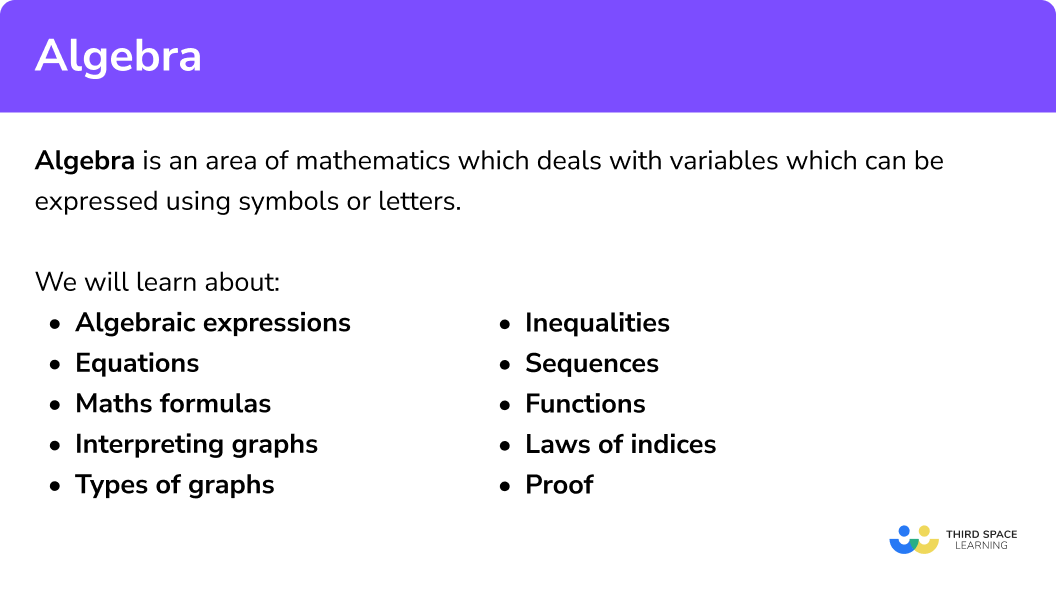
Algebraic expressions
An algebraic expression is a set of terms with letters and numbers that are combined using addition (+), subtraction (-), multiplication (\times) and division (\div).
A term is an individual letter or number.
A variable is a letter or symbol whose quantity can change.
A constant is a fixed value like a number.
A coefficient is a numerical quantity placed before a variable.
For example,
3x+2,\,4w-5y or 6{{m}^{2}}-7h+\frac{4}{k}
Step-by-step guide: Algebraic expressions
There are many different tasks you may be asked to perform with an algebraic expression.
- Simplifying expressions
We can simplify algebraic expressions by expanding brackets collecting like terms.
For example,
Expand and simplify 2(x-3y)+4(3x+2y) .
\begin{aligned} 2\left( x-3y \right)+4\left( 3x+2y \right)&\equiv 2x-6y+12x+8y \\\\ & \equiv 14x+2y \end{aligned}We can also simplify algebraic fractions.
For example,
\begin{aligned} \frac{3}{x}+\frac{1}{2 y} &=\frac{3(2 y)+x}{2 x y} \\\\ &=\frac{6 y+x}{2 x y} \end{aligned}Step-by-step guide: Simplifying expressions
- Substitution
For example,
Find the value of 6m-4g, when m=5 and g=-3 .
\begin{aligned} 6 m-4 g &=6(5)-4(-3) \\\\ &=30-(-12) \\\\ &=42 \end{aligned}Step-by-step guide: Substitution
- Factorising
For example,
Factorise fully 16{{a}^{3}}b-28a{{b}^{2}} .
16{{a}^{3}}b-28a{{b}^{2}}\equiv 4ab\left( 4{{a}^{2}}-7b \right)Step-by-step guide: Factorising
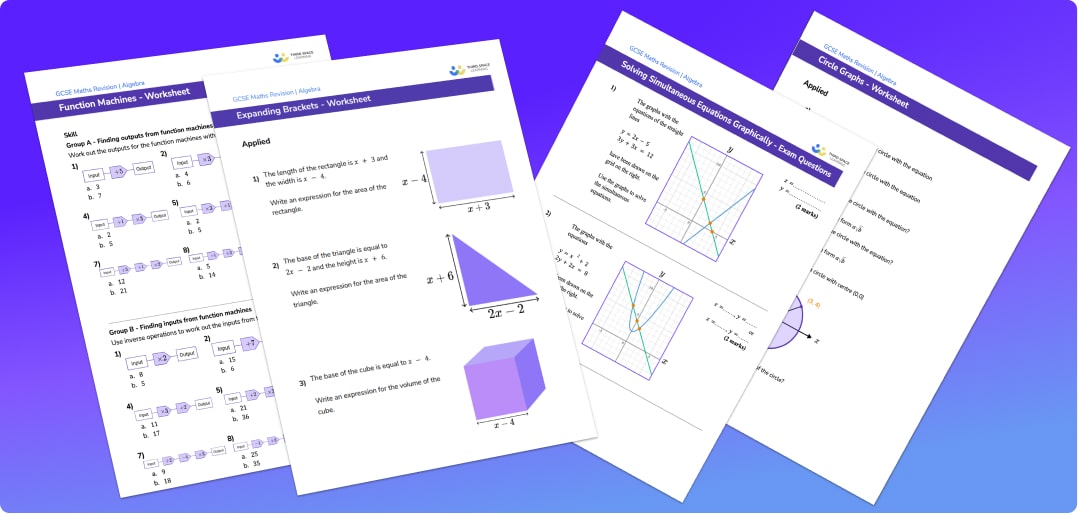
Algebra worksheets

Over 60 algebra worksheets ready to download and give to your GCSE students. Each with functional and applied reasoning questions and exam style questions.
DOWNLOAD FREE
Algebra worksheets

Over 60 algebra worksheets ready to download and give to your GCSE students. Each with functional and applied reasoning questions and exam style questions.
DOWNLOAD FREEAlgebraic equations
Equations are mathematical expressions which contain a variable and an equals sign.
For example,
3 x-7=24or
2 a-3 b=12or
\frac{5 x-2}{4}=2 x+1Step-by-step guide: Equations
There are many different tasks you may be asked to perform with equations.
- Solving equations
For example,
Solve to find x.
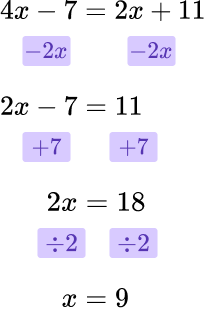
To solve quadratic equations we may need to use the quadratic formula.
Step-by-step guide: Solving equations
- Rearranging equations
For example,
Rearrange the formula to make p the subject.
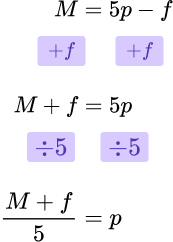
Step-by-step guide: Rearranging equations
- Simultaneous equations
For example,
Find the values of x and y if
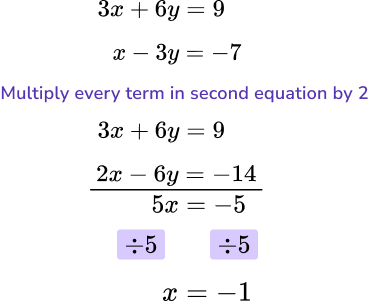
Substitute x=-1 into either of the original equations.
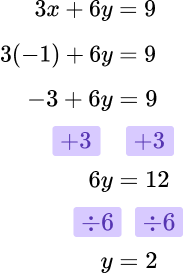
Clearly state the final answer.

Step-by-step guide: Simultaneous equations
Laws of indices
An index is a small number that tells us how many times a term has been multiplied by itself.
The plural of index is indices.
2 \times 2 \times 2 can be written as 2^3 , where 2 is the base and 3 is the index.
You can simplify expressions using laws of indices.
For example, simplify \frac{{{x}^{3}}\times \ {{x}^{7}}}{{{x}^{4}}} .
\begin{aligned} \frac{{{x}^{3}}\times {{x}^{7}}}{{{x}^{4}}} & =\frac{{{x}^{10}}}{{{x}^{4}}} \\\\ & ={{x}^{6}} \end{aligned}Laws of indices provide us with rules for simplifying calculations or expressions involving powers of the same base. This means that the larger number or letter must be the same.
| Multiplying | To multiply two powers with the same base, add the indices. | x^{a}\times{x^{b}}=x^{a+b} |
| Dividing | To divide two powers with the same base, subtract the indices. | x^{a}\div{x^{b}}=x^{a-b} |
| Brackets | To raise one power to another power, multiply the indices. | (x^{a})^{b}=x^{ab} |
| Fraction | To raise a base to a fraction \frac{m}{n} , calculate the nth root of the base, raised to the power m. | x^{\frac{m}{n}}=\sqrt[n]{x^m} |
| Negative | To raise a base to a negative number, take the positive power of the reciprocal. | x^{-a}=\frac{1}{x^a} |
Step-by-step guide: Laws of indices
Types of graphs
Types of graphs include different types of straight and curved graphs.
We need to be able to recognise and distinguish between the main types of graphs and understand the algebraic expressions for them.
Here are some of the types of graphs you will need to be able to recognise and sketch.
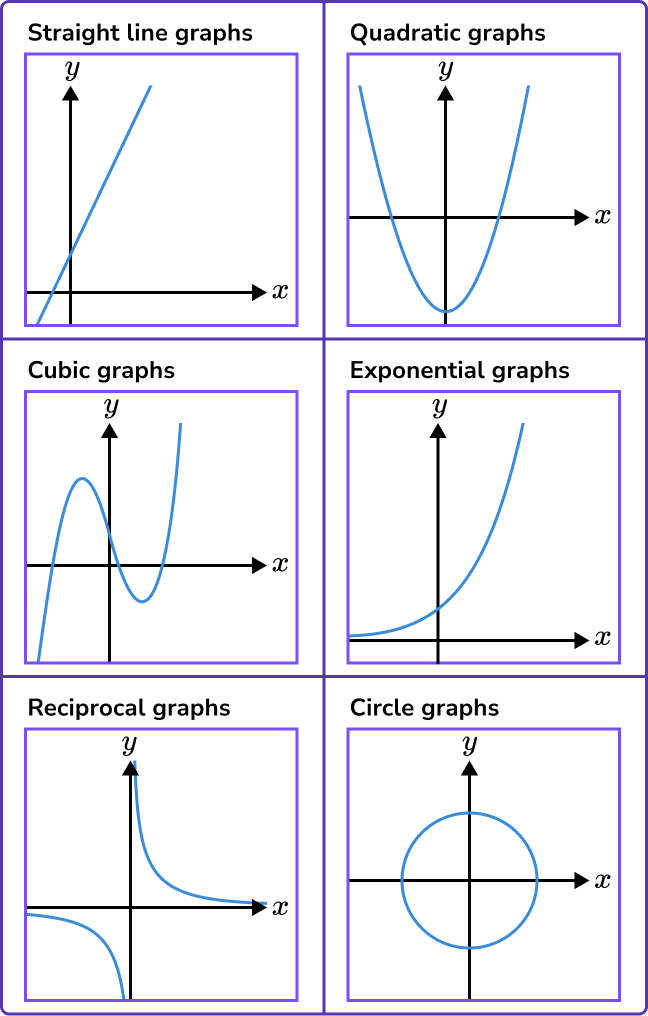
Step-by-step guide: Types of graph
Inequalities
Inequalities compare numbers or expressions in order of size.
There are four ways we can compare terms.
Less than
For example,
x \ < \ 2‘x is less than 2.’

Greater than
For example,
x \ > \ 2‘x is greater than 2.’

Less than or equal to
For example,
x \ \leq \ 2‘x is less than or equal to 2.’

Greater than or equal to
For example,
x \ \geq \ 2‘x is greater than or equal to 2.’

We can use inequalities in a variety of different ways.
- Inequalities on a number line
- List integer values in a solution set
- Solving inequalities
- Quadratic inequalities
Step-by-step guide: Inequalities
Sequences
A number sequence is a set of numbers that follow a particular pattern or rule to get from term to term.
There are four main types of sequences you need to know, they are arithmetic sequences, geometric sequences, quadratic sequences and special sequences.
Step-by-step guide: Sequences
- Arithmetic sequences
An arithmetic sequence is an ordered set of numbers that have a common difference between each term.
If we add or subtract the same number each time to make the sequence, it is an arithmetic sequence.

Step-by-step guide: Arithmetic sequences
- Geometric sequences
A geometric sequence is an ordered set of numbers that progresses by multiplying or dividing each term by a common ratio.
If we multiply or divide by the same number each time to make the sequence, it is a geometric sequence.

Step-by-step guide: Geometric sequences (coming soon)
- Quadratic sequences
A quadratic sequence is an ordered set of numbers that follow a rule based on the sequence n^{2}=1, 4, 9, 16, 25, ... (the square numbers).
The difference between each term is not equal, but the second difference is.
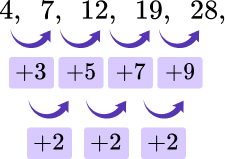
Step-by-step guide: Quadratic sequences
- Special sequences
You will need to be able to recognise some important special sequences.
The Fibonacci Sequence is a famous sequence. We generate the Fibonacci Sequence by adding the previous two terms together to work out the next term.

Functions in algebra
Functions in algebra are used to describe the operation being applied to an input in order to get an output.
Step-by-step guide: Functions in algebra
- Function machines
Functions can be presented using a function machine.

Step-by-step guide: Function machines
- Function notation
Functions can be described using function notation.
The f in f(x) is known as the function that is being applied to a variable x. Other letters such as g and h are also commonly used.
For example,
Let’s look at a function f described by a function machine.

Then let’s rewrite this using function notation.

Step-by-step guide: Function notation
- Composite functions
We can combine functions to make composite functions.

Step-by-step guide: Composite functions
Common misconceptions
- The sign in front of the term
The sign in front of the term is part of the term. When we underline the like terms, we must include the sign in front of the term.
- Using exponents (powers)
In order for two terms to be ‘like terms’ they need the same combination of variables.
3x^2 and 5x^2 are like terms.
2a^{2}b and -5a^{2}b are like terms.
BUT
3x^2 and 5x are not like terms.
2a^{2}b and -5ab are not like terms.
- Solutions to equations are not always positive whole numbers
Solutions to equations can be positive integers (whole numbers), but they can also be negative. They can also be decimals or fractions.
- Writing solutions as an inequality
When solving an inequality, a common error is to not include the inequality sign in the solution.
For example,
x + 5 < 8 .
The solution is x < 3.
x = 3 or ‘3’ are not acceptable as it does not identify the range of values that satisfy the inequality.
- Mistaking composite functions for the product of the functions
A common mistake is to think that fg(x) means f(x) \times g(x).
For example,
If f(x)=x+1 and g(x)=2x-3, the error will be to think that fg(x)=(x+1)(2x-3), rather than the correct answer of fg(x)=2x-2.
- When a power is outside the bracket you must raise all terms inside the bracket by that power
For example, when we simplify (4a)^{2} we must remember to square both the 4 and the a. It is common to forget to square the 4.
(4 a)^{2}=4 a \times 4 a=4^{2} a^{2}=16 a^{2}
The brackets mean the entire term is squared.
Practice algebra questions
1. Expand and simplify,
4(y-5)-3(2y-9) .




The expression expands to give 4y-20-6y+27 .
2. Find the value of 5m-4p when m=3 and p=-6 .




3. Solve 5x+20=3x+8 .




2x=-12
x=-6
4. Select the equation which could match the graph.
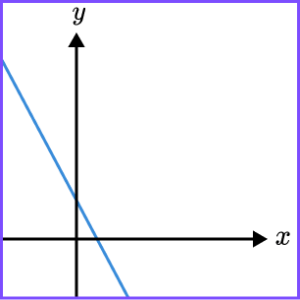




The straight line graph has a negative gradient and a positive y -intercept.
5. Simplify {{\left( 2a{{b}^{3}} \right)}^{4}} .




6. f(x)=2x-1 and g\left( x \right)={{x}^{2}}+1. Find gf(2) .




Algebra GCSE questions
1. Here are the first 4 terms of an arithmetic sequence.
-2, 5, 12, 19, ….
(a) Find the nth term of the sequence.
(b) Find the 100th term of the sequence.
(4 marks)
(a)
7n
(1)
Correct constant term of -9 .
(1)
(b)
Attempt to use nth term 7(100)-9 .
(1)
691(1)
2. (a) Factorise fully.
36{{x}^{4}}{{y}^{3}}-27x{{y}^{2}}
(b) Solve to find x.
6x-2=14-2x
(4 marks)
(a)
A correctly factorised expression but not fully factorised. For example, 3x\left( 12{{x}^{3}}{{y}^{3}}-9{{y}^{2}} \right) .
(1)
Answer of 9x{{y}^{2}}\left( 4{{x}^{3}}y-3 \right) .
(1)
(b)
Method to isolate the x. For example, 8x=16 .
(1)
x=2(1)
3. Draw lines to match the graph with the correct equation.
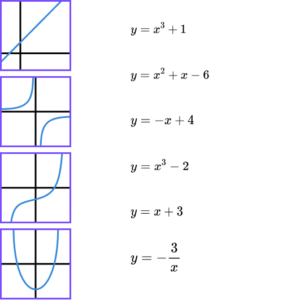
(4 marks)
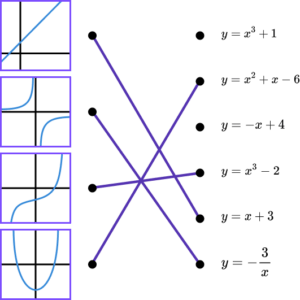
1 correct
(1)
2 correct
(1)
3 correct
(1)
4 correct
(1)
The most popular lessons are
Still stuck?
Prepare your KS4 students for maths GCSEs success with Third Space Learning. Weekly online one to one GCSE maths revision lessons delivered by expert maths tutors.

Find out more about our GCSE maths tuition programme.
